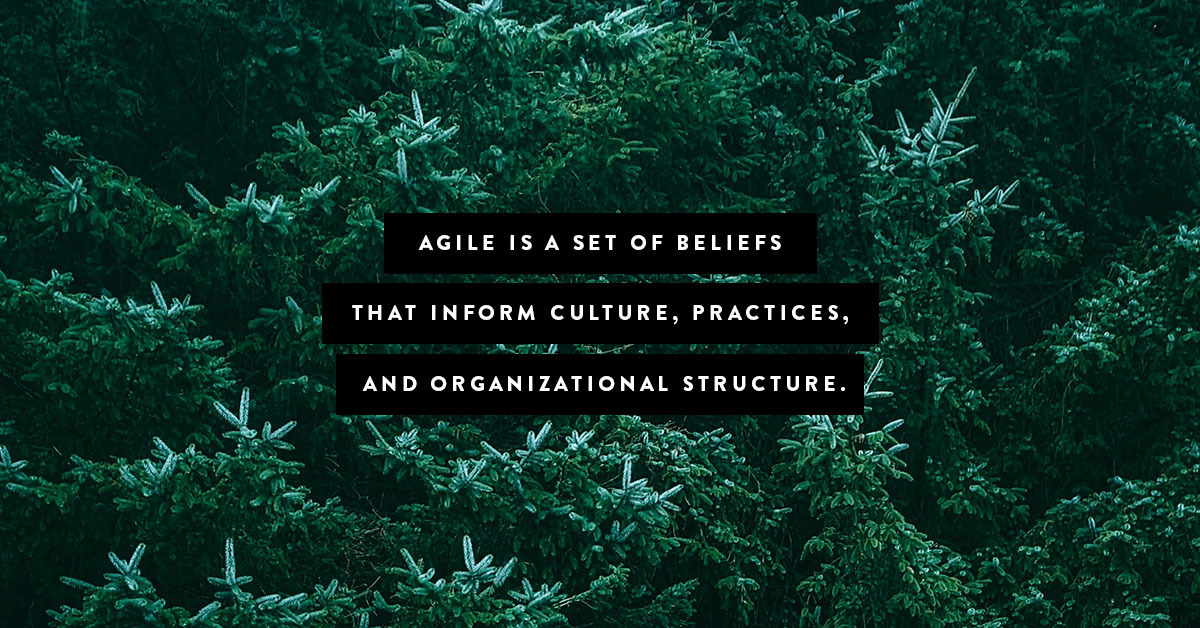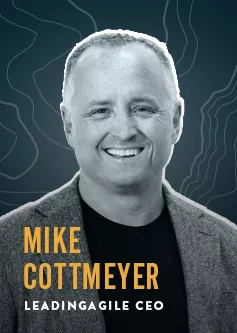Agile Can Be Anything
Part of the problem writing about agile…speaking about agile… talking to others about agile… trying to get an organization to adopt agile… or even building a company to lead agile transformations… is that there is no common definition of agile. There is no accepted best practice.
Agile is a set of beliefs that inform culture, practices, and organizational structure.
To some, agile starts with culture change. It’s a belief that managers are bad, and that managing should be left to the people doing the work. It’s about being open to change, letting go of traditional planning, letting go of making commitments, letting go of holding people accountable. It’s about changing how the organization behaves in response to these beliefs.
To others, agile is about practice and methodology. The things you do on a day-to-day basis. The roles that people play, The ceremonies they perform, The artifacts they create. It’s about adherence to a set of rules about how the team engages with each other, how they deal with requirements, how they track and plan their work. How they collaborate.
To a few, agile is about alignment. It’s about how we form teams. How we govern. How we measure and control. It’s about business architecture, technology architecture, organizational architecture. It’s about creating a rational system of delivery. It’s about defining a system that creates optionality, breaks dependencies, and improves times to market.
Some folks take a business view of agile. Some a process view of agile. Some a technology view of agile. To some agile is something that the IT group does. To others, it’s about the business. Some people think that agile can only be done by really small teams. Others believe that it can be done at scale. Some think that scaling agile isn’t really agile at all.
Most seem to agree that agile comes from the values and principles in the Agile Manifesto. That said, some of us think that the Manifesto is outdated and needs to be updated to deal with our current reality. Others think that agile is really more about lean, while some think that we are post-agile and we need to do something else altogether.
Here is my take… the people signing the checks don’t care about agile. They do care about agility. To them, agility is about having the ability to respond to changing market conditions in the face of extreme uncertainty. It’s not about no planning. It’s about appropriate planning. It’s not about no estimates. It’s about appropriate estimates.
It’s about creating plans that are resilient to change.
Agile isn’t the goal. Predictability, quality, early ROI, cost savings, product fit, and innovation are the goal. Leading an agile transformation is about building the kind of organization that has the opportunity to meet these goals. Most organizations don’t stand a chance in their current state. Process and culture are not enough. Significant change is necessary
The question is how do we lead that change.




Comments (4)
Yash
Great article Mike. Today a lot of organizations struggle to understand what their real goals are and assume adopting some Agile practices are the goal
Lopa
Very nice and bang on. It is about agility.
Steven
Excellent post summarizing the most important points. Thanks for sharing
Rick Vance
Agile is one thing, it’s an adjective. It can apply to many things.